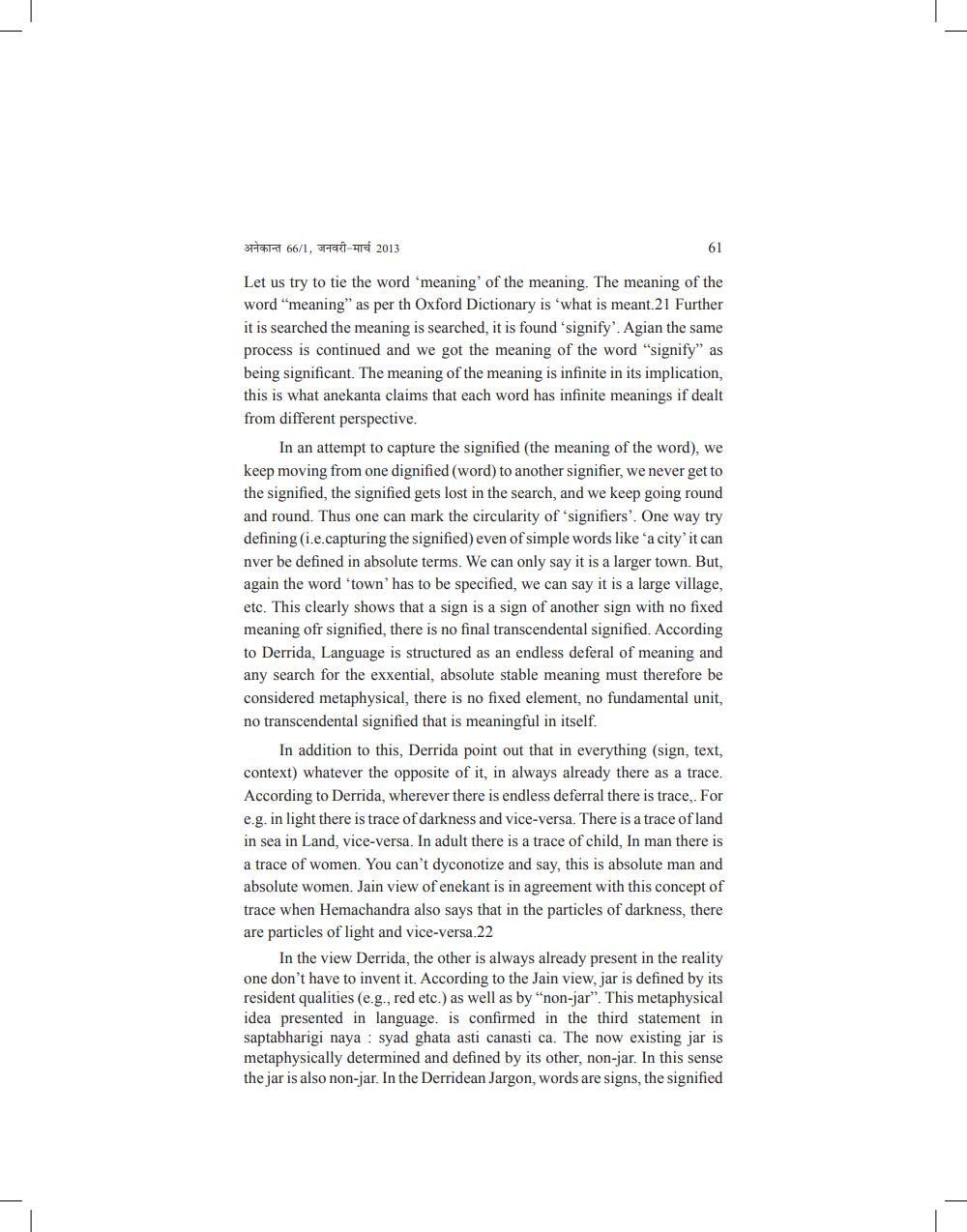________________
3116166/1, 4794-2013
Let us try to tie the word 'meaning of the meaning. The meaning of the word meaning" as per th Oxford Dictionary is 'what is meant.21 Further it is searched the meaning is searched, it is found 'signify'. Agian the same process is continued and we got the meaning of the word "signify" as being significant. The meaning of the meaning is infinite in its implication, this is what anekanta claims that each word has infinite meanings if dealt from different perspective.
In an attempt to capture the signified (the meaning of the word), we keep moving from one dignified (word) to another signifier, we never get to the signified, the signified gets lost in the search, and we keep going round and round. Thus one can mark the circularity of 'signifiers'. One way try defining (i.e.capturing the signified) even of simple words like 'a city'it can nver be defined in absolute terms. We can only say it is a larger town. But, again the word 'town' has to be specified, we can say it is a large village, etc. This clearly shows that a sign is a sign of another sign with no fixed meaning ofr signified, there is no final transcendental signified. According to Derrida, Language is structured as an endless deferal of meaning and any search for the exxential, absolute stable meaning must therefore be considered metaphysical, there is no fixed element, no fundamental unit, no transcendental signified that is meaningful in itself.
In addition to this, Derrida point out that in everything (sign, text, context) whatever the opposite of it, in always already there as a trace. According to Derrida, wherever there is endless deferral there is trace, For e.g. in light there is trace of darkness and vice-versa. There is a trace of land in sea in Land, vice-versa. In adult there is a trace of child, In man there is a trace of women. You can't dyconotize and say, this is absolute man and absolute women. Jain view of enekant is in agreement with this concept of trace when Hemachandra also says that in the particles of darkness, there are particles of light and vice-versa. 22
In the view Derrida, the other is always already present in the reality one don't have to invent it. According to the Jain view, jar is defined by its resident qualities (e.g., red etc.) as well as by "non-jar". This metaphysical idea presented in language. is confirmed in the third statement in saptabharigi naya : syad ghata asti canasti ca. The now existing jar is metaphysically determined and defined by its other, non-jar. In this sense the jar is also non-jar. In the Derridean Jargon, words are signs, the signified




